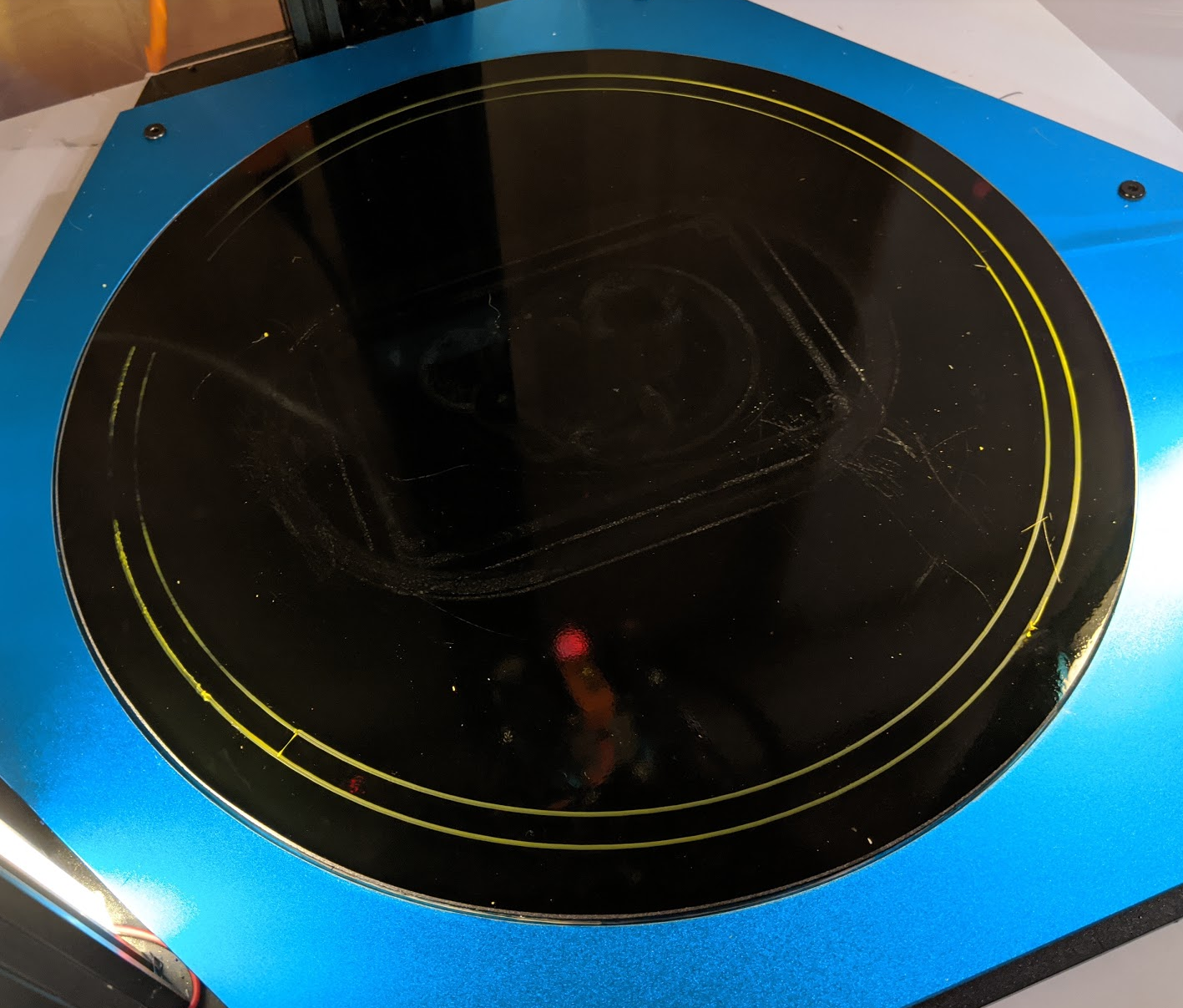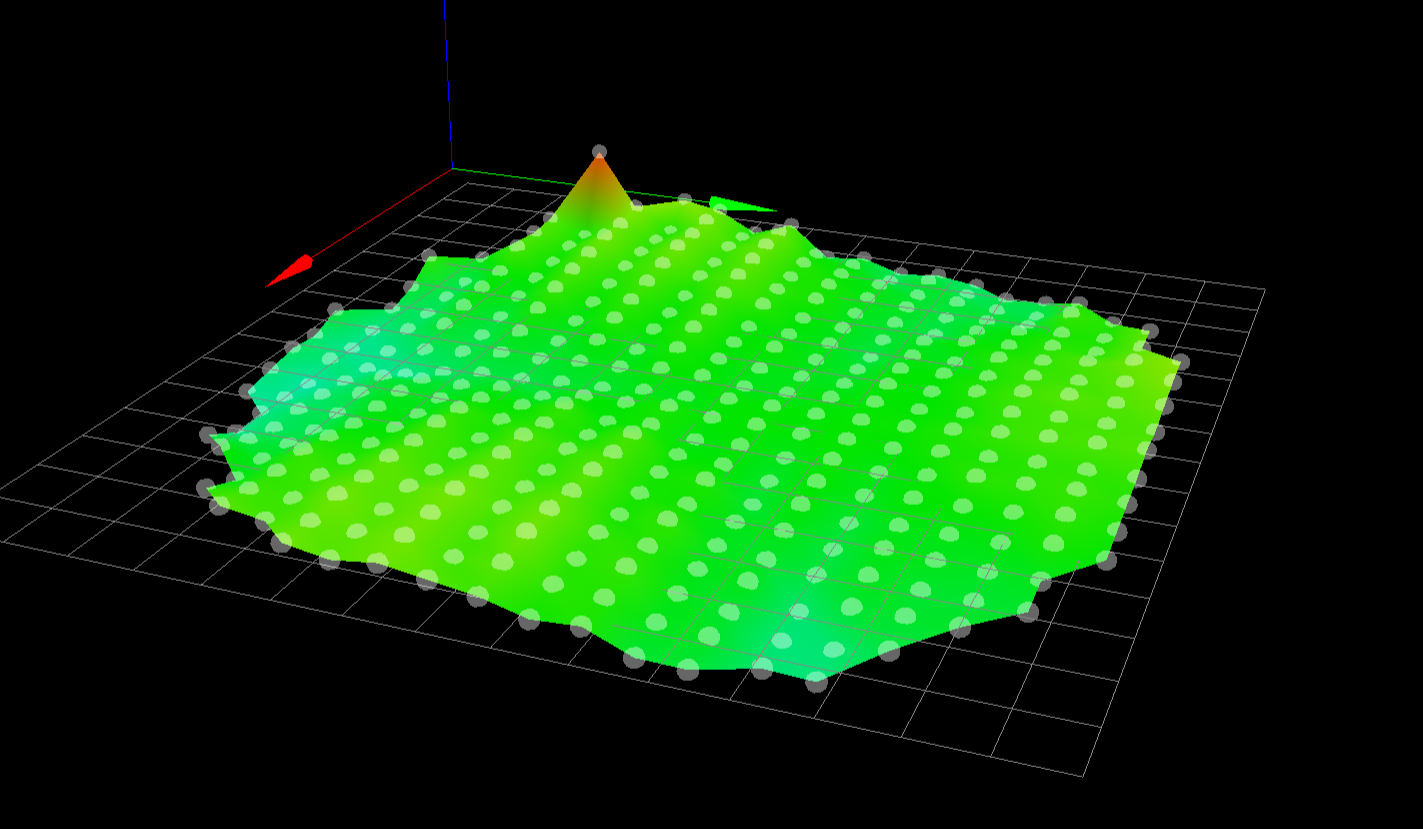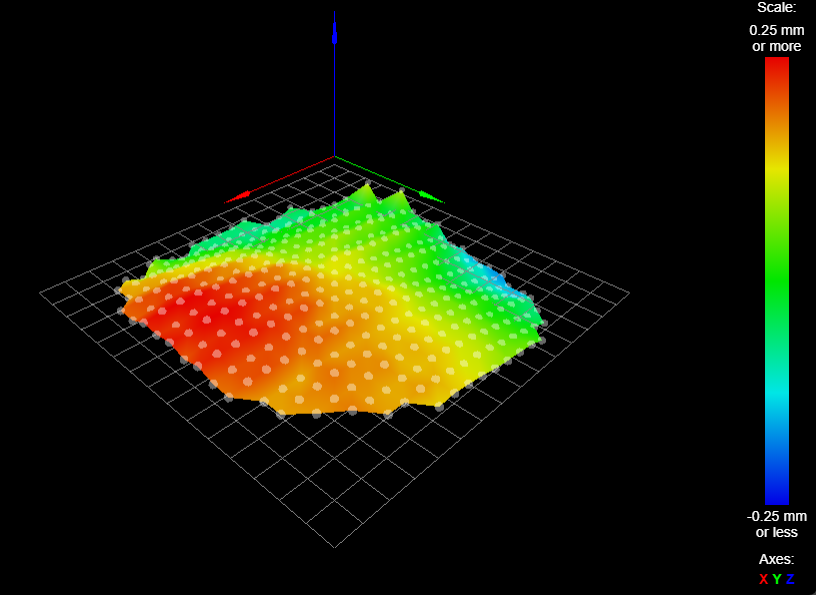Mesh compensation not working?
-
Hi All,
Hoping for some tips on diagnosing this issue. I have had my setup for maybe 2 years now and I did not have an issue with putting down a consistent first layer large prints. Lately (6 months) I have been noticing that the top corner of my first layer is too close to the bed so much so that the filament cannot come out. This has not yet been enough to cause failed prints, but the problem seems to be getting worse.

I had originally thought it was a problem with my BL-touch (Genuine) and have since replaced it with a another but the issue remains.
My mesh looks okay, at least no better or worse than when I started. I run the Delta calibration before every print.

I run the Delta calibration before every print.
Please help. This is for a Duet Maestro 2.05 on a Tevo Little Monster.
-
@infamous_panda As this area is between two towers, and the opposite tower is moving it's furthest to reach it, I'd look for backlash in the axis on the opposite side to the area that's having problems (ie axis on the right in you picture). May not be noticeable at low speed (ie probing) but problematic at higher speeds, eg printing.
Ian
-
Offset Z probes are not recommended for delta printers because they are very sensitive to varying effector tilt, which is very hard to eliminate completely. See https://duet3d.dozuki.com/Wiki/Calibrating_a_delta_printer#Section_Choosing_a_Z_probe_for_auto_calibration and https://duet3d.dozuki.com/Wiki/Calibrating_a_delta_printer#Section_Make_sure_your_build_is_accurate. If you put a spirit level on the top of the effector, you will probably find that the tilt changes with XY position.
-
It's interesting, I actually went through the motions and determined a height correction for each of my 9 G32 probe points. This allowed me to get a successful print along the perimeter which I have not been able to do for some time. It's not absolutely perfect but it's good enough for what I do and substantially improved.
However I ran Mesh bed compensation after this print and now it's looking pretty bad. If I have this height map loaded then my print fails again.

I have run G29 3 times with similar resulting height maps. Prior to adding correction to my G32 my height map looked much better. What is the relationship here. Should I just not do a mesh bed compensation anymore?
-
@infamous_panda said in Mesh compensation not working?:
I actually went through the motions and determined a height correction for each of my 9 G32 probe points.
Did you do this with manual measurement? Would be interesting to know. This page is also useful for understanding what the mesh compensation heightmap is trying to show: http://boim.com/DeltaUtil/CalDoc/Calibration.html
In your case, with the S-shape to the bed, it could be that one of the towers is out of alignment, plus a slight change in delta radius. Maybe it's moved over time? Might be worth running the higher order calibration (6, 7, 8 and/or 9 factor) and see what it comes up with. See https://duet3d.dozuki.com/Wiki/Calibrating_a_delta_printer#Section_Setting_up_the_bed_g_fileIan
-
Thanks for the article but it's a little bit over my head. I am doing 9 factor calibration (g32) with corrector I determined manually 3 readings at each point. Basically noting differences between the sensor activated Z and actual bed level offset at each location.
-
@infamous_panda said in Mesh compensation not working?:
It's interesting, I actually went through the motions and determined a height correction for each of my 9 G32 probe points. This allowed me to get a successful print along the perimeter which I have not been able to do for some time. It's not absolutely perfect but it's good enough for what I do and substantially improved.
By measuring the trigger height at those 9 points and adding the corresponding height corrections, you have eliminated the effect of effector tilt on calibration.
However I ran Mesh bed compensation after this print and now it's looking pretty bad. If I have this height map loaded then my print fails again.
That's because your height map isn't real, it's affected by effector tilt.
You have 3 options:
- Eliminate the geometric error that is causing the effector tilt to vary with XY position.
- Change to a nozzle-contact Z probe.
- Print without using a height map.
-
What factor would you say affects effector tilt most?
uneven rod length
skewed non parallel towers
tower position on the triangle